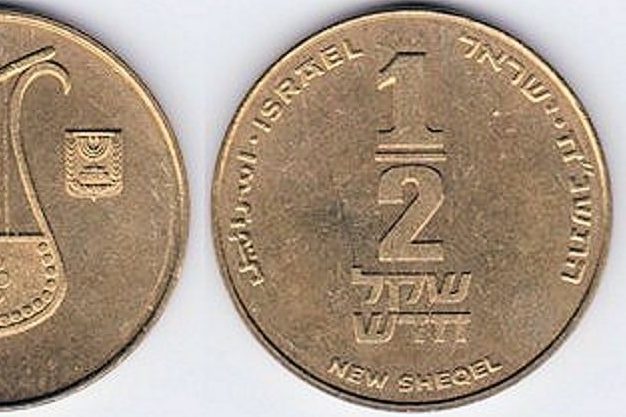This shiur provided courtesy of The Tanach Study Center
In memory of Rabbi Abraham Leibtag
Parshat Shekalim
Just a short ‘vort’ on Parshat Shekalim (Shemot 30:11-16) which we read for maftir this week.
A ‘Base’ and a ‘Crown’
What did Bnei Yisrael do with the money collected for the “machatzit hashekel”? From the commandment at the beginning of Parshat Ki-tisa it is not very clear, for it simply states that it should be given: “l’avodat OHEL MOED” – for the needs of the Tabernacle (see 30:16)
Ramban enters into a lengthy discussion in regard to whether this “parshia” discusses the yearly obligation that each jew give a “machatzit hashekel” for the “korbanot tzibur”, or if it is only a specific mitzvah for Bnei Yisrael in the desert who now prepare to build the Mishkan. However, no matter how we understand this parshia in Parshat Ki-tisa, from the opening pesukim in Parshat Pekudei it is clear that there was indeed a special donation of the “machatzit hashekel” for the specific purpose of BUILDING the Mishkan. Even though those details appear to be a bit technical, if we read ‘between the lines’, we can find a very significant message. [I suggest that you read 38:21-31, i.e. the opening pesukim of Parshat Pekudei, before continuing.]
In Parshat Pekudei we learn that Bnei Yisrael were permitted to donate as much gold and copper [“zahav” & “nechoshet”] as they chose. The primary use of the gold was to make the keilim of the Mishkan (aron, shulchan, menorah etc.), while the copper was used to make the “keilim” of the “chatzer” (i.e. the mizbach nechoshet and kiyor). [This donation totalled approx. 30 “kikar” of gold, and 70 “kikar” of copper / note that the approx. weight of a “kikar” is 30 kilo (or 65 lbs.).]
Silver, was a different story. The only silver collected was from the “machatzit hashekel”, where each member of the male population age 20 (and up) gave a half a shekel (see 38:26). Since the census totalled 603,550 -> a total silver came to 301,775 shekel. Since every 3,000 shekel is a “kikar”, this resulted with 100 “kikar” and a remainder of 1,775 shekel. What did they do with this silver? Actually, it was quite simple. The primary use of the silver was to make “adanim” [weighted base sockets] to support the “kerashim” [wooden planks] of the Mishkan. Since there were a total of 48 “kerashim” which formed the support walls of the Mishkan [20+20+8], and each “keresh” required TWO “adanim”, a total of 96 “adanim” were needed. Plus, four additional “kerashim” were needed to support the “parochet”, but each of these “kerashim” stood on only one “eden”, so a grand total of 100 [96+4] “adanim” were needed to form the base support of the “kerashim” of the Mishkan. Therefore, from this 100 “kikar” of silver they made 100″adanim”, each one weighing 1 “kikar” (about 30 kilograms), and thus forming a very solid base for the Mishkan. With the leftover 1775 shekels of silver, they made clips to connect the curtains to the poles of the outer courtyard [“chatzer”], and a sliver plating for the heads of those poles as well.
So why is this important? It is significant that the very BASE of the Mishkan, the silver “adanim” that SUPPORT the entire structure is made from the material which was donated EQUALLY by every member of Am Yisrael. On top of that base, we find “keilim” and materials which were made from the wide range of the donated gold and copper, but the base itself was different.
Similarly, from the outside of the Mishkan, the silver coating on the very top of each of the poles of the courtyard [“amudei ha’chatzer”] formed a silver like crown surrounding the Mishkan. This too, was made from the ‘equal from all’ donation of the silver of the “machatzit hashekel”. Therefore, the very base at the bottom, as well as the shiny crown at the top, reflect the joint donation where each member of Am Yisrael is equal. However, in between them, we find the “keilim” made from the extra donations of gold and copper from private individuals. This may reflect the proper balance between the need on the one hand for everyone to be equal and work together at the very base level of Judaism, yet at the same time allowing for each individual to make his own personal contribution in any additional realm that he may choose. Yet, all said and done, when one looks from the outside, the ‘finishing touches’ [the silver crown surrounding the Mishkan] must still reflect the very same unity which forms its base.
In later generations, after the Mishkan was built, the “machatzit ha’shekel” was used to buy the “korbanot tzibur”. Again we find that the very basic “korbanot TAMID” offered daily on the MIZBEACH reflected the unity and collective nature of Am Yisrael. In addition to that korban TAMID, each individual was permitted to offer an add additional “korban nedava” [voluntary offering], but once again, at the base level, we all stand in front of God as “knesset Yisrael” – one collective unit.
